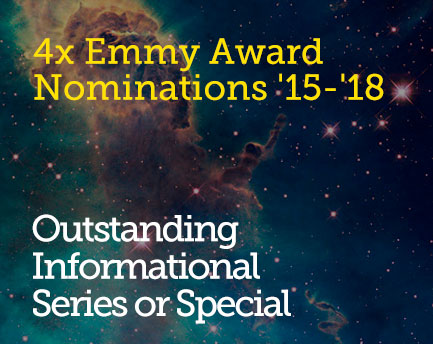April 23, 2017 6:16 pm
International Dark Sky Week – Why You Should Visit an Observatory
Celebrate International Dark Sky Week at a place where the skies are actually dark!
Today’s guest blog post is by StarTalk intern Kirk Long. Kirk is majoring in physics while minoring in mathematics and piano at Idaho State University. He spends his weekends working at the largest public observatory in Idaho, the Bruneau Sand Dunes State Park Observatory, where he gives educational astronomy presentations and operates various large telescopes for the public.
For as long as we can remember we’ve trained our collective eyes upward, wondering about the mysteries and intricacies of the heavens. Over time we’ve gotten better at looking up — figuring out how to augment our vision through telescopes of larger and larger apertures, and building instruments to detect and measure radiation outside of the spectrum visible to our rudimentary biological eyes. Observatories are the best places to appreciate the cosmic perspective, and if you haven’t visited one before you really should (you can use this tool to find observatories in your state). It’s International Dark Sky Week from the 22nd until the 28th, and I can’t think of a better way to celebrate!
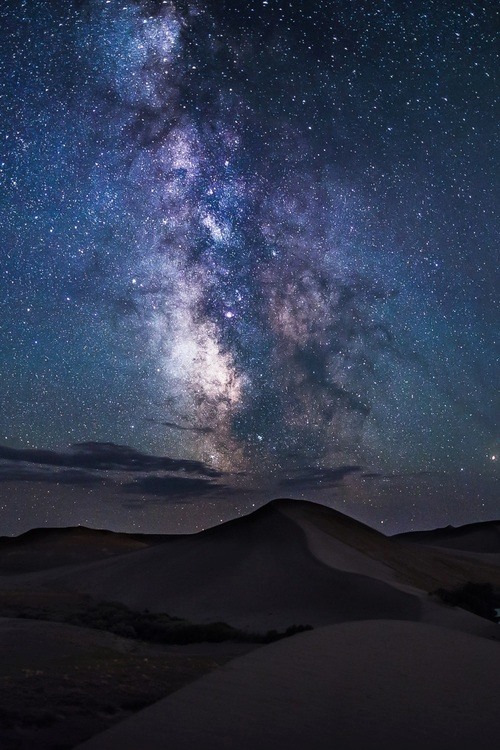
The view of The Milky Way from Bruneau Sand Dunes State Park. Credit: Bruneau Sand Dunes State Park.
Observatories are special for two reasons: first, they offer visitors the chance to look through various large instruments that most people could never afford on their own, and secondly, many observatories are built strategically as far from city lights as possible, making them much better areas to observe the night sky (especially if you spend most of your nights in the city). Although I love looking through the telescopes, I also sometimes find myself just staring up in awe of the full breadth of the Milky Way, something that you can’t see in all but the most remote areas. Many observatories are also pretty well-established places, and they often have fascinating histories behind them. You can actually look through the telescope Clyde Tombaugh used to discover Pluto at the Lowell Observatory in Arizona. At the observatory where I work the base of our telescope was signed by comet-hunter extraordinaire Carolyn Shoemaker, who co-discovered the comet Shoemaker Levy 9, well as more than 300 minor planets, and also by shuttle astronaut Barbara Morgan.
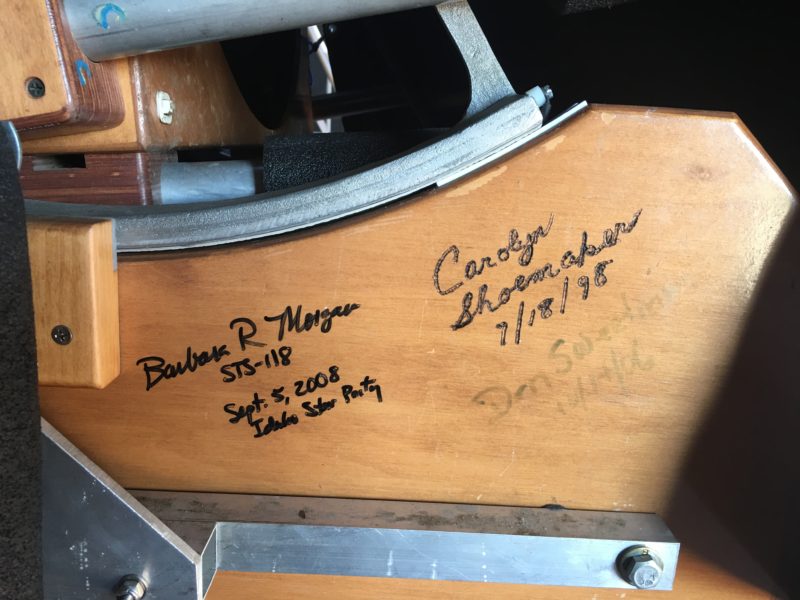
The signatures of Barbara Morgan and Carolyn Shoemaker on the base of our 25 inch reflecting telescope. Credit: Kirk Long.
So what can you see at an observatory that you can’t at home? Observatories (and the large telescopes they house) allow us to look at some of the faintest objects in the night sky, and see the brighter objects even clearer. At the observatory where I work our telescope is relatively small (for observatories) at only 25 inches in diameter, and yet still in striking detail I’ve been able to see the great red spot on Jupiter, the Cassini division between Saturn’s rings, the beautiful spiral arms of the Whirlpool and Pinwheel galaxies, and so much more. These fainter objects — galaxies and nebulae — are the best reasons to visit an observatory. Last weekend I panned through a galaxy cluster in Virgo, and within one field of view I could see the faint light of several dozen galaxies, each one containing hundreds of billions of stars millions of light years away. This is something you can’t do in your backyard with a small telescope, but it’s an incredibly profound and worthwhile experience. In that moment, some of the photons emitted by a few trillion stars ended their long and lonesome journey on the surface of my retina, and that is a paradigm altering experience with the cosmic perspective that never gets old. Something I often tell visitors at the observatory is that our instruments are (relatively) cheap time machines — not only are they looking at objects that are incredibly distant, they are also peering back into the annals of time.
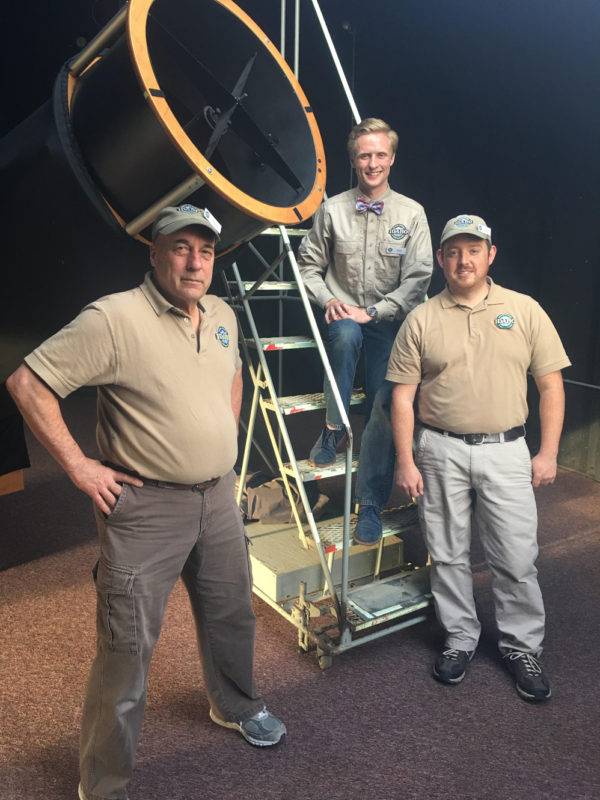
The telescope crew at the Bruneau Sand Dunes State Park Observatory. Left to right: Doug Stoneback, Kirk Long, and Greg Harman. Credit: Bob Fish.
Visiting an observatory also comes with the added perk of being able to have a guide (like me) tell you what you’re looking at and why it’s important. You might be surprised at what you can learn! Mary Bybee, one of my coworkers, recalls “the first time I observed Saturn through the telescope, the rings were vertical and I had believed from pictures that the rings were horizontal — I quickly and viscerally realized that there isn’t an up or down in space.“ Experiencing the night sky can be a daunting task, especially if you’re unfamiliar with it. Visiting an observatory every once in a while ensures that you will have a mind-blowing, enlightening, and educational experience — the knowledge you’ll gain will make you a hit at parties for years to come (at least at star parties) and will help you appreciate the cosmic perspective a little better each time you look up at night.
“The most rewarding part has been the opportunity to meet travelers all over the world,” continues Mary. People travel from all over the country and even the world to witness things through our telescopes, but sadly it’s still something that a surprisingly large number of people never get to see. “It’s a humbling experience,” Greg says, “but rather than just making me feel small it fills me with inspiration and awe to be part of such a grand universe.” Doug Stoneback, another one of my coworkers, says working at the observatory is “especially rewarding in that we have a chance to connect with the public, and most of all, the youth. We have a chance to inspire them at an early age when they’re the most impressionable.”
Doug and Greg both started out as amateur astronomers, but from the moment they first touched a telescope they were hooked, and I suspect you might be too (if you aren’t already). Observatories everywhere often rely heavily on volunteers, donations, and public funding, and all of us running the telescopes at the Bruneau Observatory started as volunteers. Volunteering can be a great way to learn about the night sky, so be sure to reach out to your local observatory if it’s something you think you might be interested in. If this post inspires you to visit your local observatory, there are a few things you should keep in mind. Not all observatories are open to the public all the time (many are also used for research), so be sure to check ahead of time to see when their public hours are before making the trip out there. And if you can, line up your trip to coincide with a night close to the new moon or a night where the moon won’t rise until later on — the reason for this is that the moon is such a bright light source in the night sky that it acts almost as “light pollution” and can make it harder to observe those fainter galaxies and nebulae. If you can’t make it out to an observatory every weekend like I’m privileged enough to do, follow us (startalk-radio) on Snapchat for cool shots of the moon, the sun, and whatever else I can get my tiny iPhone to photograph through the telescope.
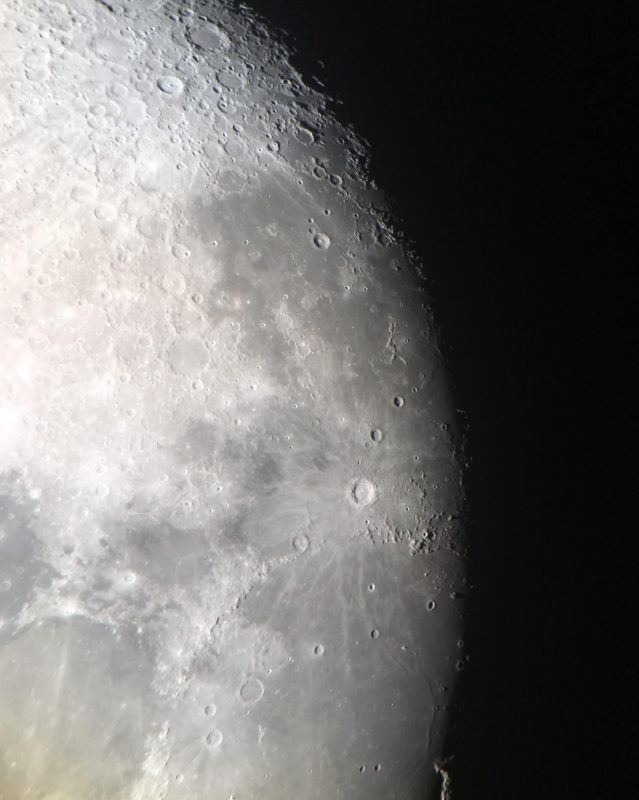
A shot of the moon, taken from the StarTalk Snapchat. Credit: Kirk Long.
Do you have a favorite memory at an observatory? Share it with us in the comments! From all of us at StarTalk we hope you have a wonderful week celebrating dark skies, and don’t forget to keep looking up.
Get the most out of StarTalk!
Ad-Free Audio Downloads
Ad-Free Video Episodes
Stickers & Mugs
Live Streams with Neil
Priority Cosmic Queries
Early-Access Videos
Learn the Meaning of Life
...and much more

 Become a Patron
Become a Patron

